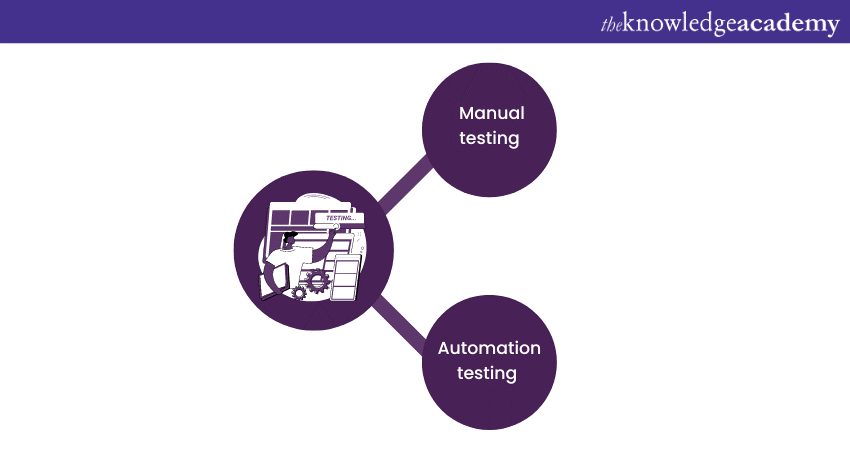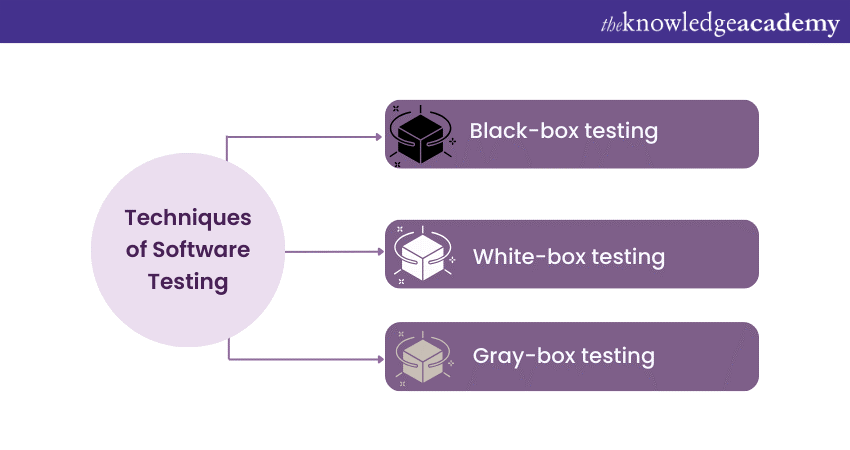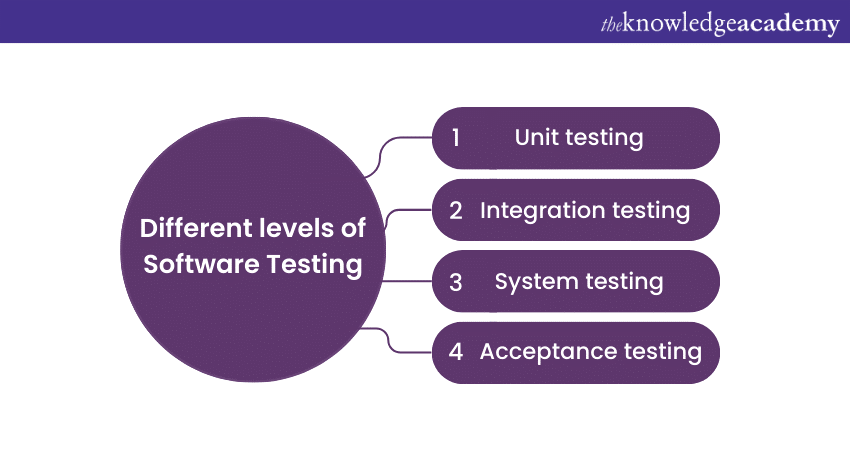We may not have the course you’re looking for. If you enquire or give us a call on 01344203999 and speak to our training experts, we may still be able to help with your training requirements.
Training Outcomes Within Your Budget!
We ensure quality, budget-alignment, and timely delivery by our expert instructors.

The field of Software Testing is expanding with each passing day. Every testing project presents unique challenges to the tester since applications and systems are developed for a variety of domains and sectors. This is mainly because the tester must first comprehend the domain and the client’s perspective before beginning testing operations.
A tester might have to switch up the testing methodologies when moving from one project to another. Therefore, it is crucial to maintain the principles of Software Testing. The first requirement for success in Software Testing is to grasp the fundamentals right from the start; only then can we create a wonderful product.
Software Testing is a key part of the Software Development Life Cycle (SDLC) that ensures the reliability of software as a product. A well-structured process ensures a top-quality software product with low cost and a short timeframe. Software Testing fundamentals include all the basic knowledge of Software Testing, such as definitions, types, principles, and how it works. Read this blog to learn more!
Table of Contents
1) What is Software Testing?
2) Why do we need Software Testing?
3) Types of Software Testing
4) Techniques of Software Testing
5) Different levels of Software Testing
6) Conclusion
What is Software Testing?
Software Testing involves systematic evaluation of software applications to detect errors, bugs, and defects in the code. The primary goal of testing is to make sure that the software functions as intended and satisfies the specified requirements. This iterative process allows developers to identify and fix issues, making the software robust and reliable. SDLC (software development life cycle) plays a crucial part in analysing the software at each stage, following certain approaches to reach the goal of business success.
Try out new Software Testing Courses for a successful career!
Why do we need Software Testing?
Building high-quality software that is highly logical and free of errors and bugs during coding is crucial. As software complexities reach new heights, there is a significant probability that the final code will have functional and design-related flaws. It is essential to perform Software Testing to identify problems before they become critical issues.
Software Testing is necessary because it allows for the early detection and correction of flaws and problems even before the software product is released. A robust testing strategy followed by software developers can make the difference between a project’s success and a catastrophic failure. The stability, security, and high performance of a thoroughly tested software solution guarantee time savings, cost-effectiveness, and user-friendliness. It plays a vital role in the procedure, serving as a support system. Therefore, a logical methodology is required to avoid redundancy and to save a considerable amount of money and resources for the organisation.
Types of Software Testing
Companies use a variety of Software Testing approaches to make sure that modifications to their code function as planned. However, not all testing is created equal, and we examine how various testing methodologies vary from each other. Some of the popular ones are discussed below.

Manual testing
Manual testing involves testers executing test cases without the use of automated tools. It requires human intervention to observe the software’s behaviour, identify defects, and record test results. This type of testing follows behavioural patterns to identify bugs in order to achieve the best outcomes.
Automation testing
Automated testing utilises specialised tools to automatically execute pre-defined test cases. It is ideal for repetitive tasks and regression testing, saving time and effort. The most significant advantage of this type of testing is that it doesn't require human intervention to be performed.
Techniques of Software Testing
Each testing technique has unique characteristics, benefits, and drawbacks. Although we may have heard about some of it and worked on some before, not everyone is knowledgeable about it. In this segment, we will discuss some of the most used Software Testing techniques.

Black box testing
Black box testing focuses on the external functionality of the software without considering its internal code structure. Testers validate the software based on input and output expectations, regardless of its internal workings. Black box performs with utmost accuracy once given the right number of inputs to the system.
White box testing
White box testing examines the internal structure, code, and logic of the software. Testers design test cases based on an understanding of the code to ensure thorough coverage. When given inputs to the system, white box testing divides testing into three categories: testing the database, testing web forms, and testing source code in order to deliver the results.
Gray box testing
Here, testing is performed from the user's perspective. Grey box testing combines elements of both black box and white box testing. Testers have partial knowledge of the internal code, allowing them to design more effective test cases to check how well software can perform in a real-world scenario.
Different levels of Software Testing
There are many steps to follow along the Software Testing process before an engineering team begins working on anything new inside the project pipeline. In this part of the blog, we will focus on various steps required before the deployment of software.

Unit testing
This level of testing involves testing individual units or components of the software in isolation. It ensures that each unit functions correctly and interfaces well with other units. It validates that the application performs tasks according to the design specifications. Unit testing relies heavily on derived schemes; therefore, this method of testing can't be entirely trusted.
Integration testing
Integration testing verifies the interaction between different units or modules to uncover any integration issues. There could be several opportunities for customer requirements to alter throughout module development. This form of testing basically emphasises data communication channels to maintain the fluency of the software. It's possible that these additional requirements can't be unit tested; hence, system integration testing is required.
System testing
System testing evaluates the complete and integrated software product to identify vulnerabilities and weaknesses in the software. The goal is to enhance the workability of each component and ensure that they function as a unified setup. In this level of testing, testers validate the entire system against specified requirements to ensure it meets customer expectations.
Acceptance testing
Acceptance testing is known as the final stage of testing and involves assessing whether the software meets the user’s acceptance criteria. In other words, it assesses the user-friendliness and ease of navigating the software conducted by end-users or stakeholders to determine if the software is ready for production.

Conclusion
Software Testing is a pivotal aspect of the software development process that ensures the delivery of high-quality, reliable, and functional products. Understanding the different types, techniques, and levels of testing is crucial for developers and testers to create robust software that aligns with user expectations. By integrating effective testing practices throughout the SDLC (software development life cycle), organisations can enhance satisfaction and secure a competitive edge in the market.
Frequently Asked Questions
Upcoming Business Analysis Resources Batches & Dates
Date
 ISTQB Software Testing Foundation
ISTQB Software Testing Foundation
Tue 7th May 2024
Mon 20th May 2024
Mon 3rd Jun 2024
Mon 17th Jun 2024
Mon 1st Jul 2024
Mon 29th Jul 2024
Mon 12th Aug 2024
Tue 27th Aug 2024
Mon 9th Sep 2024
Mon 23rd Sep 2024
Mon 7th Oct 2024
Mon 21st Oct 2024
Mon 4th Nov 2024
Mon 18th Nov 2024
Mon 2nd Dec 2024
Mon 16th Dec 2024







 Top Rated Course
Top Rated Course


 If you wish to make any changes to your course, please
If you wish to make any changes to your course, please


